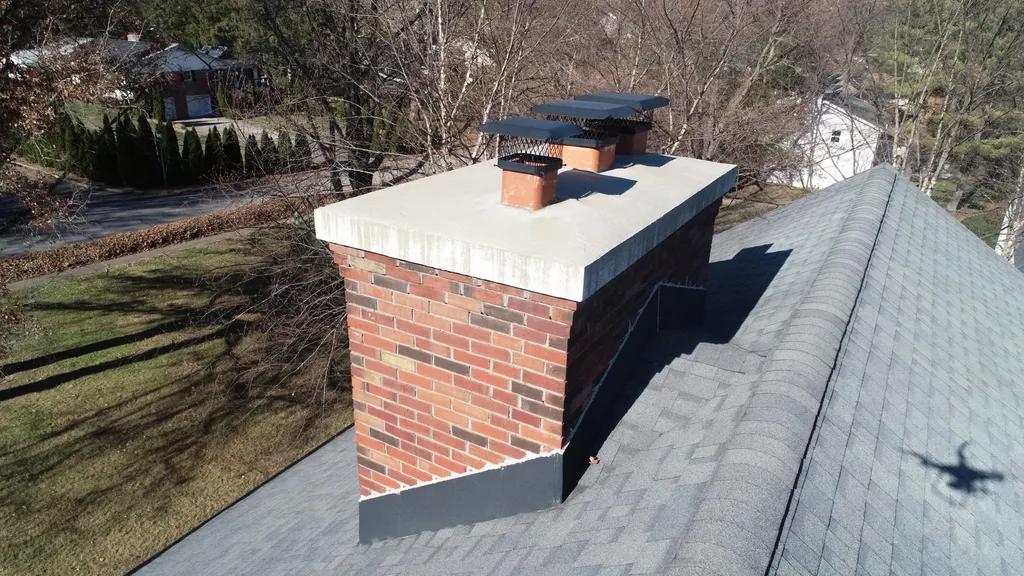Chimineas are a popular choice for outdoor heating, offering both warmth and ambiance to outdoor spaces. However, maintaining these charming fire features is essential for both safety and functionality. In particular, the flue of a chiminea plays a crucial role in ensuring proper ventilation and efficient operation. In this article, we will explore the importance of replacing your chiminea flue and the benefits it brings to your outdoor experience.
Table of Contents
- The Function of the Chiminea Flue
- Signs Your Chiminea Flue Needs Replacing
- The Benefits of Replacing a Damaged Chiminea Flue
- Steps to Properly Replace Your Chiminea Flue
- Q&A
- Wrapping Up

The Function of the Chiminea Flue
In a chiminea, the flue plays a crucial role in ensuring proper ventilation and smoke control. Over time, flues can become clogged or deteriorate, leading to inefficient chimney operation and potential safety hazards. Regular maintenance and timely replacement of the flue are essential to keep your chiminea functioning effectively.
Some key functions of the chiminea flue include:
- Smoke Ventilation: The flue helps to draw smoke up and out of the chiminea, preventing it from billowing back into your outdoor living space.
- Regulation of Airflow: By adjusting the flue opening, you can control the amount of oxygen entering the fire and regulate the burn rate.

Signs Your Chiminea Flue Needs Replacing
One of the key components of a chiminea is the flue, which helps to regulate airflow and prevent smoke from escaping into your outdoor living space. Over time, the flue can become damaged or worn out, leading to a variety of issues that can impact the efficiency and safety of your chiminea. It’s important to know the signs that your chiminea flue needs replacing so you can address any issues before they become more serious.
Some common signs that your chiminea flue needs replacing include a buildup of soot and creosote, difficulty starting or maintaining a fire, smoke coming out of the chiminea when in use, and visible damage or cracks in the flue itself. If you notice any of these signs, it’s important to have your flue inspected and replaced as soon as possible to prevent further damage and ensure the continued safe operation of your chiminea. By addressing these issues promptly, you can enjoy your outdoor fires safely and efficiently for years to come.

The Benefits of Replacing a Damaged Chiminea Flue
When it comes to maintaining the functionality and safety of your outdoor fireplace, the condition of the chiminea flue is crucial. Over time, a damaged flue can lead to various issues such as smoke backflow, poor ventilation, and even potential fire hazards. By replacing your damaged chiminea flue, you can enjoy a range of benefits that will enhance your outdoor fire experience.
Here are some reasons why replacing your chiminea flue is important:
- Improved ventilation: A new flue will ensure proper airflow, leading to better combustion and reduced smoke emission.
- Enhanced safety: A damaged flue can increase the risk of fire accidents, while a replacement will help maintain a safe environment for outdoor gatherings.
- Better performance: A new flue will optimize the burning process, providing consistent heat output and longer burning times.
Steps to Properly Replace Your Chiminea Flue
Step-by-Step Guide to Properly Replace Your Chiminea Flue
Replacing your chiminea flue is an important maintenance task that can help improve the efficiency and safety of your outdoor fireplace. Follow these steps to ensure you replace your flue properly:
- Assess the condition: Before beginning the replacement process, carefully inspect the current flue to determine if it needs to be replaced. Look for signs of damage such as rust, cracks, or corrosion.
- Measure and purchase a replacement: Once you have confirmed that the flue needs to be replaced, measure the dimensions of the existing flue to ensure you purchase the correct size replacement. You can typically find replacement flues at home improvement stores or online.
- Remove the old flue: Use a wrench to carefully loosen and remove the bolts or screws holding the old flue in place. Carefully lift the old flue out of the chiminea.
- Install the new flue: Place the new flue into the chiminea, ensuring a snug and secure fit. Reattach any bolts or screws to secure the new flue in place.
| Important Note: | Make sure to properly clean and maintain your chiminea regularly to prolong the life of your new flue. |
|---|
Q&A
Q: What is a chiminea flue and why is it important to replace it?
A: A chiminea flue is the chimney component that allows smoke and exhaust to escape from the fire pit. It is important to replace it because a damaged or clogged flue can lead to poor air circulation, increased smoke output, and potential fire hazards.
Q: How often should a chiminea flue be replaced?
A: It is recommended to inspect the condition of the chiminea flue annually and replace it if any signs of wear or damage are present. Additionally, if you notice a decrease in the efficiency of your fire pit or a significant increase in smoke output, it may be time to consider replacing the flue.
Q: What are the benefits of replacing a chiminea flue?
A: Replacing a chiminea flue can improve the overall functionality and efficiency of your fire pit. A properly functioning flue will help to reduce smoke emissions, promote better air circulation, and minimize the risk of chimney fires.
Q: How can I tell if my chiminea flue needs to be replaced?
A: Signs that your chiminea flue may need to be replaced include visible cracks or damage, excessive smoke output, and difficulty in starting or maintaining a fire. If you notice any of these issues, it is important to inspect the flue and consider replacement if necessary.
Q: Are there any safety concerns associated with a damaged or clogged chiminea flue?
A: Yes, a damaged or clogged chiminea flue can pose a significant safety risk. Poor air circulation can lead to the buildup of toxic gases and potentially cause carbon monoxide poisoning. Additionally, a blocked flue can increase the risk of chimney fires. It is important to regularly inspect and maintain your chimney flue to ensure the safety of your outdoor fireplace.
Wrapping Up
In conclusion, maintaining and replacing your chiminea flue is crucial for ensuring the safety and efficiency of your outdoor fire pit. By regularly inspecting and replacing damaged or deteriorating flue components, you can minimize the risk of chimney fires and carbon monoxide poisoning, while also maximizing the longevity of your chiminea. Remember, a small investment in flue maintenance today can save you time, money, and potentially even lives in the future. Thank you for reading and we hope this article has been informative and helpful. Stay safe and enjoy your outdoor fireplace responsibly.


